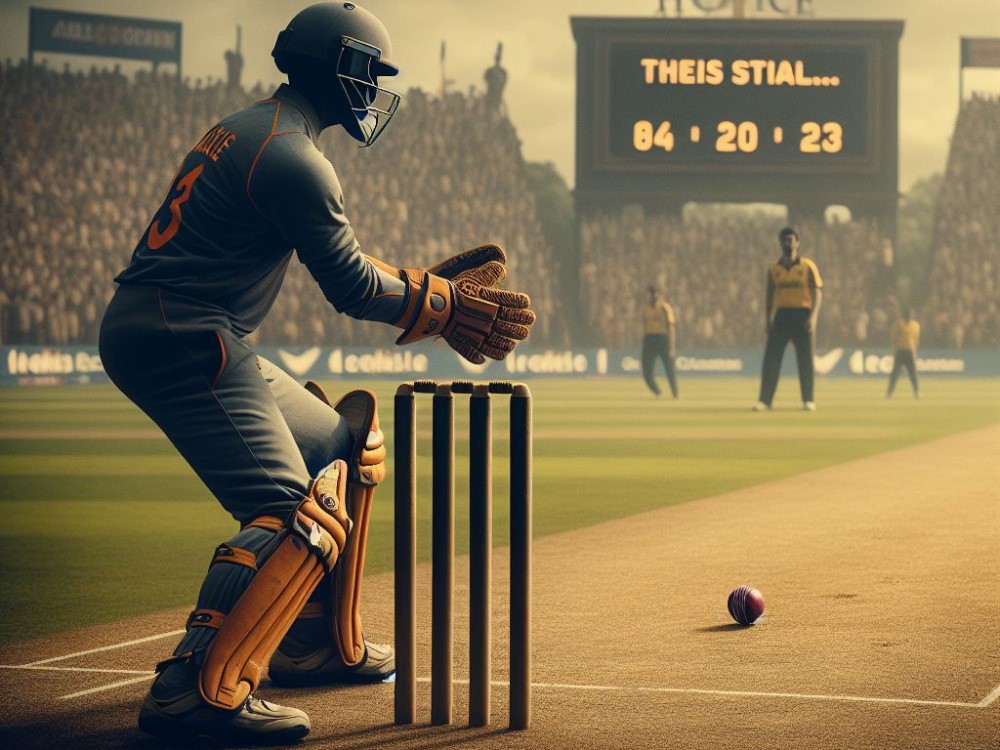
What Are Effective Field Placement Strategies For Cricket Captains
Cricket is a sport that requires strategic planning and decision-making, and one crucial aspect of the game is field placement. Effective field placement strategies can have a significant impact on the outcome of a match.
Understanding the importance of these strategies and the role of the cricket captain is essential for a successful team. It is also important to consider various factors when devising field placement strategies.
Factors such as the knowledge of the pitch and playing conditions, assessing the strengths and weaknesses of the opposition, analyzing the batting style of the opposition, utilizing the right bowling combinations, and considering the skill sets and capabilities of the fielders are crucial.
In addition, team dynamics and effective communication play a vital role in executing these strategies. This article will explore effective field placement strategies, tactical field changes for different bowlers, and the significance of communication and leadership in enhancing team performance.
Importance of Effective Field Placement Strategies

The importance of effective field placement strategies in cricket cannot be overstated. These strategies have the potential to significantly influence the outcome of a match. Placing fielders in strategic positions is crucial as it puts pressure on the batsmen, limits their scoring options, and enhances the likelihood of taking wickets.
Captains must thoroughly analyze the batting styles of their opponents and the strengths and weaknesses of their own team to determine the most efficient field placements. This involves positioning fielders in areas where the batsmen are most likely to strike the ball and adjusting the field settings according to the game situation.
Implementing effective field placement strategies greatly enhances the chances of success for the bowling team.
Understanding the Role of the Cricket Captain
Understanding the role of the cricket captain is paramount in skillfully implementing field placement strategies. The captain must possess an in-depth comprehension of the game, the team’s strengths and weaknesses, and the opposition’s playing style.
They must have the ability to make strategic decisions regarding field placements based on these factors. Additionally, the captain needs to adeptly convey their plans to the team and swiftly adapt as the game progresses.
By doing so, they can optimize the team’s chances of taking wickets and constraining the opponents’ scoring. It is a proven fact: A cricket captain bears the responsibility of arranging the fielding positions to maximize the team’s opportunities for taking wickets.
What Are the Responsibilities of A Cricket Captain?
The responsibilities of a cricket captain are diverse and crucial to the success of their team. They include making crucial decisions during the match, such as setting the fielding positions, making bowling changes, and strategizing to outsmart the opposition.
What are the responsibilities of a cricket captain? The captain is also responsible for leading by example, both on and off the field, motivating and inspiring their teammates. They act as the liaison between the players and the coaching staff, ensuring effective communication within the team.
The captain is responsible for maintaining team discipline and unity. The captain plays a pivotal role in the team’s performance and sets the tone for their success.
Fun Fact: The first recorded cricket match was played in 1697 in Sussex, England.
Factors to Consider for Field Placement Strategies
Considering effective field placement strategies for cricket captains, there are several important factors to consider. From the knowledge of the pitch and playing conditions to assessing the strengths and weaknesses of the opposition, and analyzing their batting style, all these elements play a crucial role in determining the right field placement.
The utilization of the right bowling combinations and understanding the skills and capabilities of fielders further enhances a captain’s ability to strategically position the players on the field. An astute captain should carefully evaluate these factors for a successful field placement strategy.
1. Knowledge of the Pitch and Playing Conditions
To create effective field placement strategies in cricket, captains must possess a deep understanding of the pitch and playing conditions. This entails having extensive knowledge about the characteristics of the pitch, including its hardness, grass cover, and potential for spin or movement.
Captains should also take into account factors such as weather conditions and their impact on aspects like swing or the deterioration of the pitch. By thoroughly analyzing these elements, captains can make well-informed decisions regarding field placements that optimize their team’s chances of taking wickets and limiting scoring opportunities.
A prime illustration of the significance of pitch knowledge is demonstrated when England successfully adopted a spin-heavy approach on a dry and crumbling Chennai pitch to secure a Test match victory against India in 2021.
2. Assessing the Strengths and Weaknesses of the Opposition
Assessing the strengths and weaknesses of the opposition is crucial for effective field placement strategies in cricket.
- Study the performance of the opposition players in previous matches.
- Assessing the strengths and weaknesses of the opposition, identify the key players who have been consistently performing in batting, bowling, and fielding.
- Analyze the batting and bowling averages and strike rates of the opposition team.
- Assess the weaknesses of the opposition, such as vulnerable against spin bowling or struggling in certain batting positions.
- Consider the team’s recent form and any specific patterns or tactics they employ.
3. Analyzing the Batting Style of the Opposition

Analyzing the batting style of the opposition is a crucial aspect of effective field placement strategies for cricket captains. By understanding how the opposition bats, captains can strategically position their fielders to create pressure and take wickets.
Captains should examine the opposition’s preferred shots, strengths, weaknesses, and their approach to different situations. This analysis helps captains make informed decisions about field placements, such as placing fielders in positions where the opposition is likely to target, or setting traps to induce false shots.
By adapting field placements based on the opposition’s batting style, captains can maximize their team’s chances of success.
4. Utilizing the Right Bowling Combinations
Assess pitch conditions to determine the ideal bowling combination, adjusting based on whether the pitch favors spin or pace. Analyze the opposition’s batsmen to exploit their weaknesses, selecting bowlers accordingly.
Strike a balance between fast bowlers and spinners, considering the batsmen’s proficiency against different bowling styles. Evaluate bowler form, fitness, and performance against specific oppositions to finalize the combination.
Plan for various game situations by tailoring bowling combinations; for instance, deploy aggressive bowlers early on for wicket-taking or economical bowlers in the middle overs to control the run rate.
To ensure utilizing the right bowling combinations, the captain should thoroughly analyze the conditions, the opposition’s batting lineup, and the bowlers’ form and fitness. By striking the appropriate balance between pace and spin and adapting to different game situations, the captain can maximize the team’s chances of success.
5. Fielders’ Skill Sets and Capabilities
In cricket, the fielders’ skill sets and capabilities are crucial factors for effective field placement. The skills and capabilities of fielders determine their roles in specific positions on the field.
Considering the specific skill sets and capabilities of fielders ensures that they are placed in positions where they can maximize their effectiveness on the field. This strategic placement can lead to crucial catches, run-outs, and ultimately, contribute to the team’s success.
Team Dynamics and Communication
Discover the key to success on the cricket field with effective field placement strategies. In this section, we’ll dive into the fascinating world of team dynamics and communication. From strategic close-in fielders and cordon positions to optimizing field placements for spin bowlers and fast bowlers, we’ll cover it all.
Whether you’re aiming for an attacking or defensive field setting, get ready to unlock the secrets that can take your cricket team to the next level. Get ready to revolutionize the game!
Effective Field Placement Strategies

Discover the art of effective field placement strategies in cricket. From attacking tactics to defensive maneuvers, and strategies tailored for different game formats, this section is your guide to optimizing your team’s performance on the field.
With insights from experts and backed by reliable sources, you’ll learn how to make calculated decisions that can change the course of a match. Get ready to elevate your captaincy game and lead your team to victory with these field placement strategies.
1. Attacking Strategies
Attacking strategies are crucial for cricket captains to apply pressure on the opposition and increase the chances of taking wickets. Here are some steps to effectively implement attacking strategies:
- Utilize close-in fielders to create pressure and provoke false shots by setting attacking field positions.
- Motivate fast bowlers to bowl aggressively, aiming for the stumps and delivering bouncers to unsettle the batsmen.
- Deploy spinners to introduce variations and exploit weaknesses in the opposition’s batting lineup.
- Plan for regular bowling changes to maintain unpredictability and keep the batsmen guessing.
- Strategically use short-pitched deliveries, yorkers, and slower balls to disrupt the rhythm of the batsmen.
2. Defensive Strategies
- When it comes to defensive strategies in cricket field placement, the main goal is to contain runs and keep pressure on the batsmen.
- One important defensive strategy is to spread the field by placing fielders in positions that cover the gaps in the outfield. This helps to limit the batsmen’s opportunities for hitting boundaries.
- Another key defensive strategy is to strategically set catching positions. By positioning fielders in strategic locations, catching opportunities can be created within the stipulated fielding restrictions.
- Creating leg-side traps is yet another effective defensive strategy. This involves using a combination of fielders, such as leg slip, short leg, and backward square leg, to encourage the batsman to play shots on the leg side where more fielders are present.
- To reduce scoring, it is important to set attacking fields. This means positioning fielders in areas that discourage the batsman from scoring freely, thus building up pressure.
- Additionally, close-in fielders can be utilized strategically. Placing fielders in close proximity to the batsman, like in the slip cordon and at short midwicket, allows them to take catches from edges or induce mistakes.
3. Strategies for Different Formats of the Game
Different formats of cricket require different strategies in field placement.
Test Matches: In the longer format, captains aim for consistency and containment. A balanced field with close-in fielders and a defensive off-side field is common.
One Day Internationals (ODIs): Captains need to balance attack and defense. They often employ a ring of fielders to prevent boundaries and have more attacking fielders during power plays.
T20 Internationals: The emphasis is on aggressive play. Captains opt for attacking field placements, with more fielders in catching positions. The fine leg and third man areas are protected to prevent boundaries.
Tactical Field Changes

When it comes to strategic field placement in cricket, the tactics employed by captains can make all the difference. In this section, we’ll dive into the realm of tactical field changes and explore various factors that influence them.
From the positioning of close-in fielders and cordon positions to field placement strategies tailored for spin bowlers and fast bowlers, we’ll uncover the art of setting up an attacking or defensive field and how it can impact the outcome of the game. Get ready to unravel the secrets of effective field placement strategies in cricket!
1. Close-in Fielders and Cordon Positions
In the game of cricket, close-in fielders and cordon positions play a vital role in defense and containment strategies. These positions are strategically positioned near the batsman to enhance the likelihood of trapping them or making successful catches.
Close-in fielders and cordon positions demand skilled players with quick reflexes and a solid understanding of the game to achieve success in containing the opposition’s batting lineup.
2. Field Placement for Spin Bowlers
When it comes to field placement for spin bowlers, it is crucial to consider various key positions. These positions include short leg, silly point, forward short leg, leg slip, deep mid-wicket, deep square leg, mid-on, and deep mid-off.
Strategically positioning fielders in these areas can apply pressure on the batsman, enhance the possibility of taking a wicket, and limit scoring opportunities. It is important to maintain good coordination and communication with the fielders to ensure effective field placement.
Remember to continually adapt and adjust the field placement based on the strengths and weaknesses of the batsman.
3. Field Placement for Fast Bowlers
When it comes to field placement for fast bowlers in cricket, there are several key steps to consider. Understanding the bowler’s strengths and areas of expertise is the first and most important step. Assessing the pitch and playing conditions is then necessary to determine the most effective field positions.
Placing fielders strategically in positions that maximize the chances of taking wickets, such as slips, gully, or short leg, is crucial. Additionally, it is essential to keep a deep fielder for fast bowlers who generate extra bounce and can induce catches in the outfield.
Close-in fielders should also be used to create pressure on the batsman and encourage false shots. Lastly, ensuring good communication between the captain, bowler, and fielders is necessary to make quick adjustments based on the batter’s response.
By following these steps, cricket captains can optimize field placement for fast bowlers and increase their chances of taking wickets.
4. Attacking or Defensive Field Settings
To implement attacking or defensive field settings in cricket, captains need to carefully strategize their field placements. Here are some steps to consider:
- Analyze the game situation and the opposition’s batting style to determine whether an attacking or defensive approach is required.
- Place fielders strategically to create pressure on the batsmen by having more fielders in catching positions for attacking field settings.
- In defensive field settings, spread out the fielders to restrict scoring opportunities and make it harder for the batsmen to find gaps.
- Consider the strengths and weaknesses of your bowlers and assign fielding positions accordingly. For example, in attacking settings, place your best fielders in the positions where catches are likely to be taken.
- Communicate the field placement strategy effectively to your team, ensuring everyone understands their role and responsibilities.
These steps can help captains make informed decisions and enhance their team’s performance by effectively implementing attacking or defensive field settings.
The Role of Communication and Leadership

When it comes to cricket, communication and leadership play a pivotal role in guiding field placement strategies. Discovering how to effectively convey these strategies to the team is key, ensuring everyone is on the same page.
Recognizing the significance of captaincy in bolstering team morale can make all the difference. Join me as we delve into the world of cricket, exploring the vital role communication and leadership play in shaping effective field placement strategies.
How to Effectively Communicate Field Placement Strategies to The Team
To effectively communicate field placement strategies to the team, there are several steps you can follow.
First, hold a pre-match discussion. Before the game begins, gather the team together and talk about the field placement strategies. Take into consideration the opposition’s batting style and strengths, and base your strategies on that.
Next, make sure to give clear instructions to each player. Explain the desired field positions in a way that everyone can understand. If necessary, use visual aids or diagrams to provide further clarity.
Encourage open communication among the players. Let them know that they can address any concerns or make suggestions regarding the field placements. It’s important to have a team environment where everyone feels comfortable sharing their thoughts.
During the game, consistently remind the fielders of their designated positions. Take advantage of breaks or overs to reiterate the positions and ensure that everyone is on the same page. This will help maintain consistency throughout the match.
Establish non-verbal cues or codes to discreetly communicate any changes in the field placements. This will allow you to make adjustments without the opposition being aware of your strategies.
Remember, effective communication of field placement strategies is essential for teamwork, enhanced fielding performance, and increasing the chances of taking crucial wickets. Stay engaged and responsive throughout the match, and be ready to make timely adjustments to the field positions based on the game’s dynamics.
The Importance of Captaincy in Boosting Team Morale
The importance of captaincy in boosting team morale cannot be overstated in the game of cricket. A captain plays a vital role in providing leadership, motivation, and guidance to their team. Here are a few ways in which effective captaincy can boost team morale:
- Lead by example: A captain who performs well on the field inspires confidence and motivates their teammates to give their best.
- Effective communication: Clear communication between the captain and the team members fosters trust and unity, which in turn boosts morale.
- Positive reinforcement: Encouraging and recognizing the efforts of individual players can have a significant impact on team morale.
- Motivational speeches: A captain’s inspiring words before a game or during a challenging moment can uplift the spirits of the entire team.
- Team bonding: Organizing team-building activities and creating a supportive environment helps enhance team morale and camaraderie.





